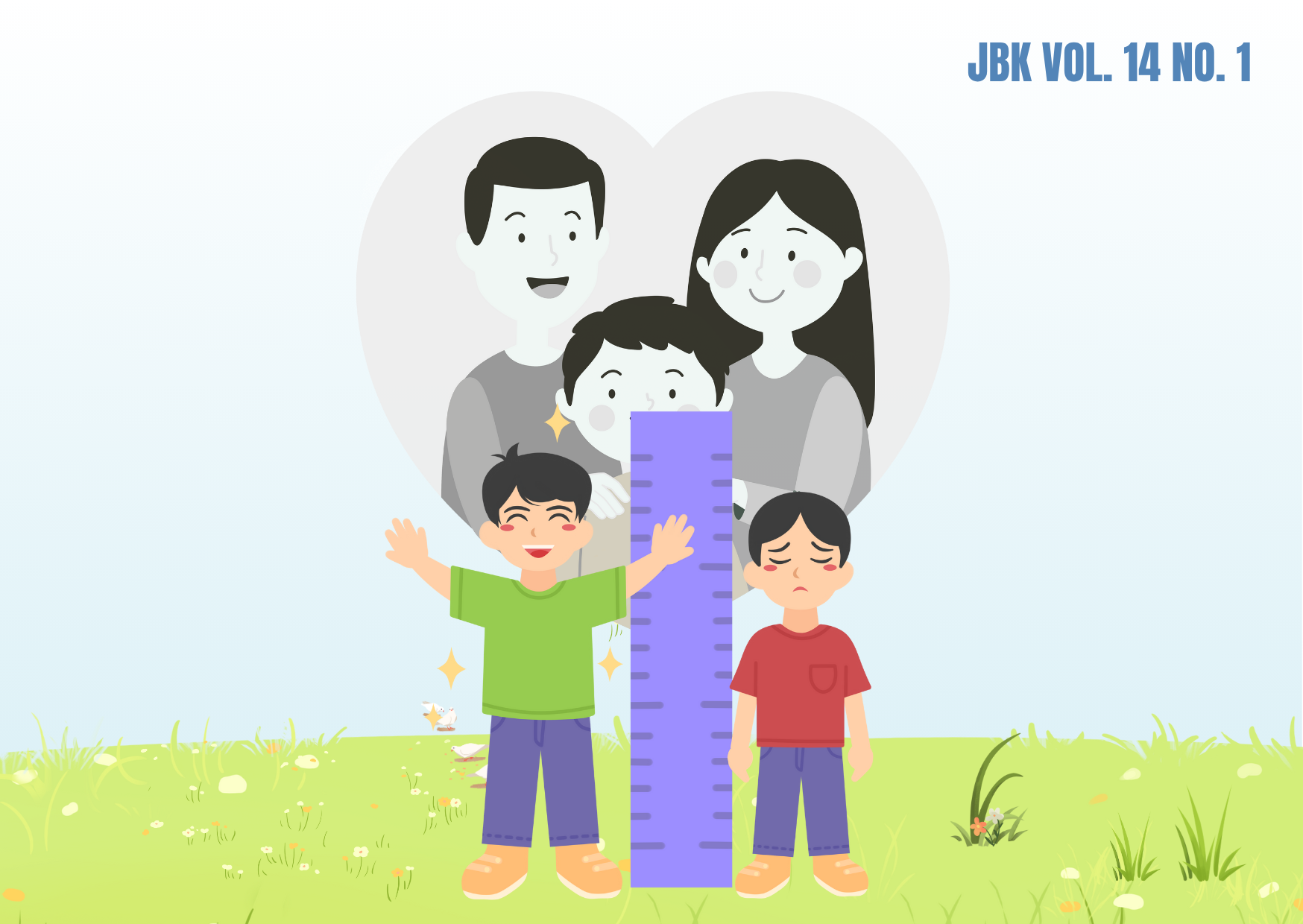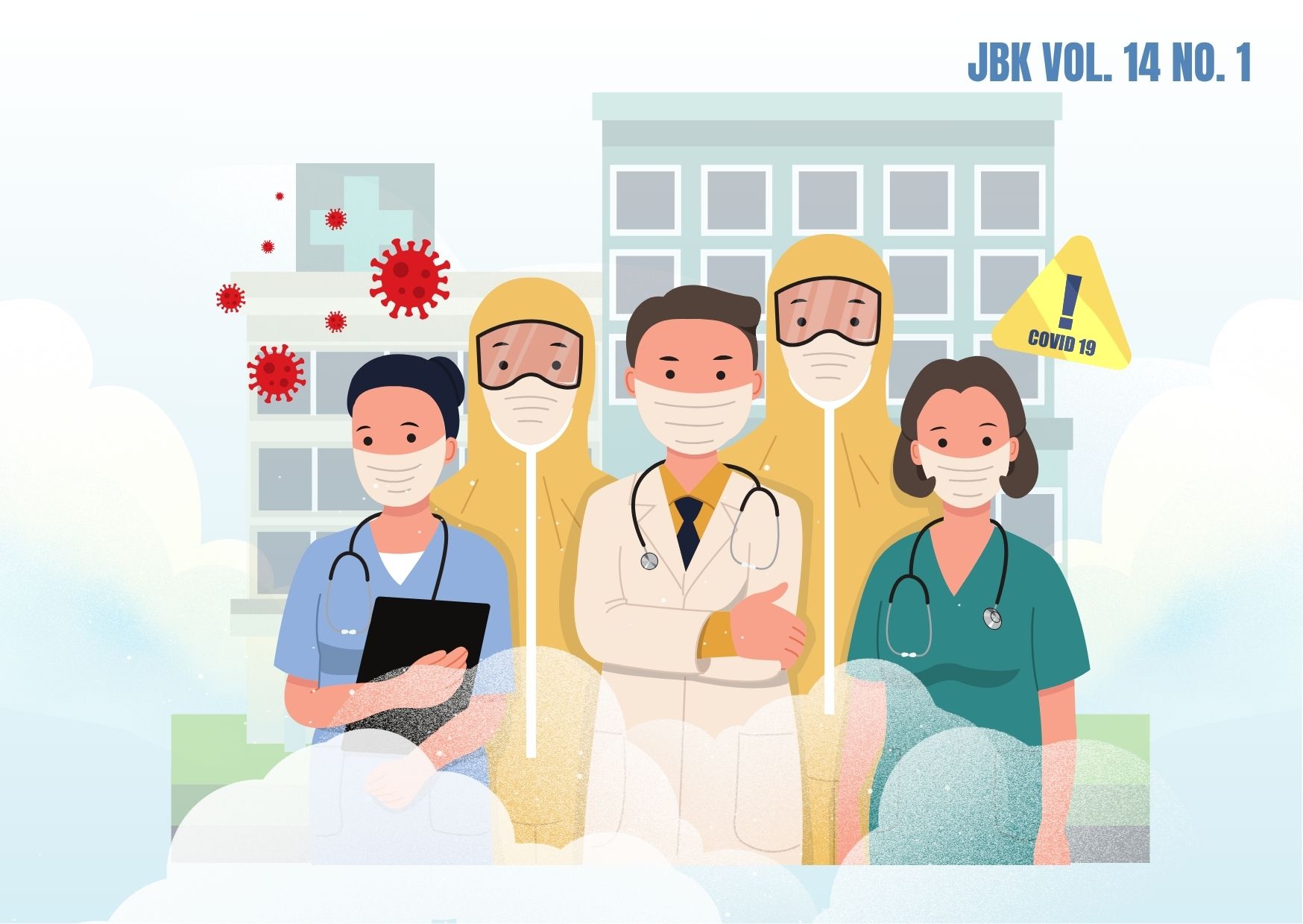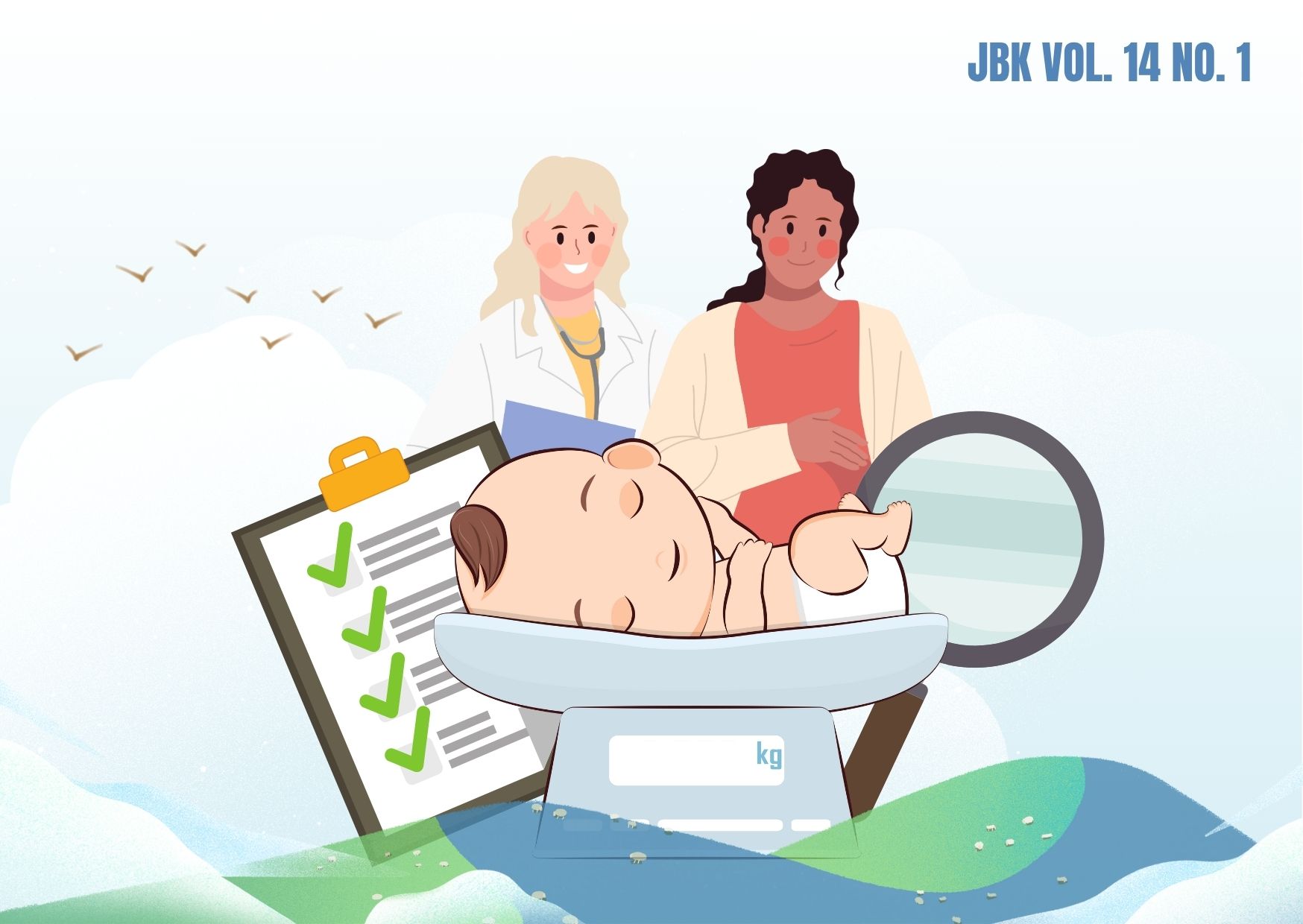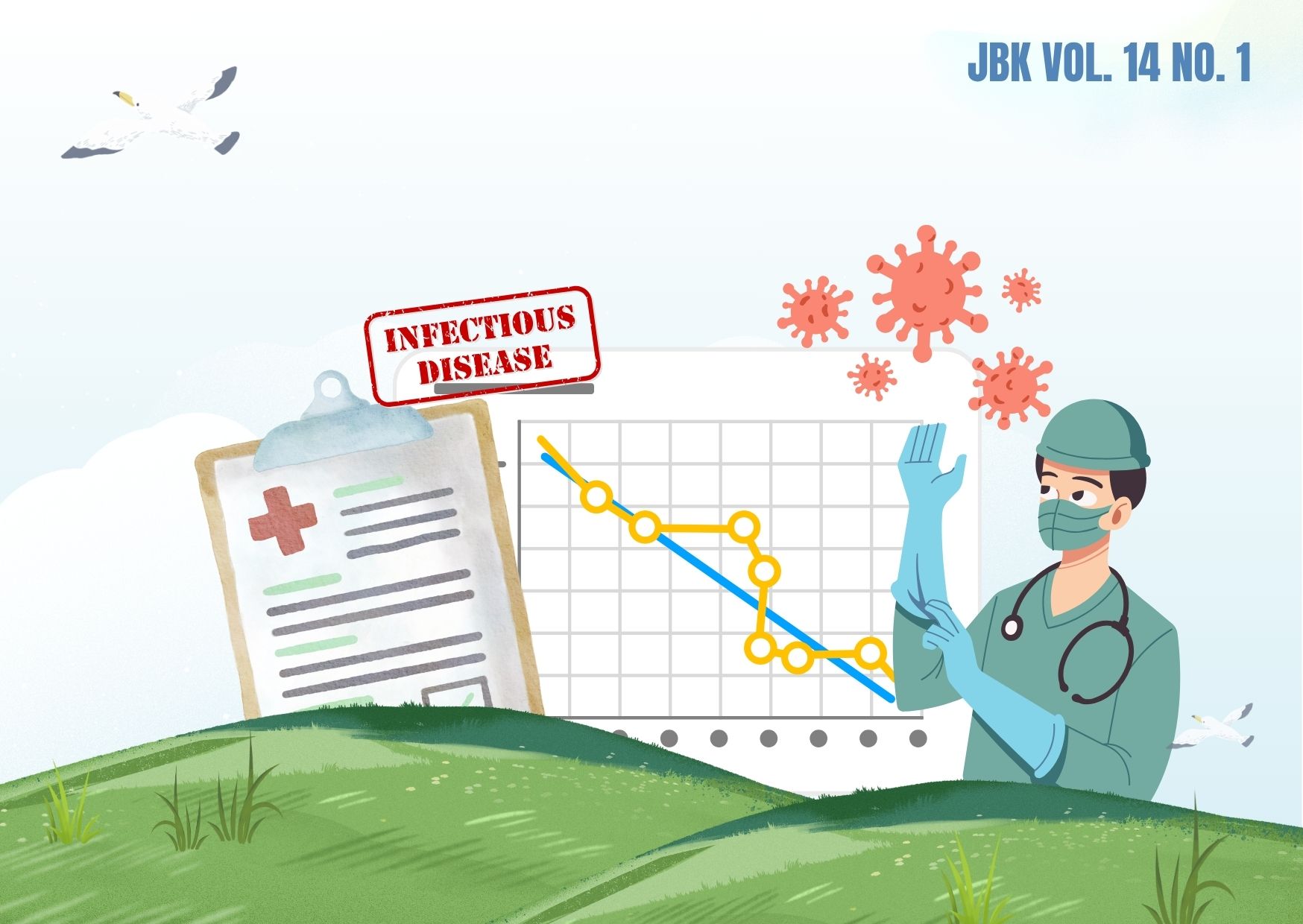RISK FACTORS FOR DIABETES MELLITUS IN MEN OF PRODUCTIVE AGE IN INDIA (NATIONAL FAMILY HEALTH SURVEY 2015-2016)
Downloads
Diabetes Mellitus (DM) is a serious health problem that continues to increase and can cause morbidity and mortality in many countries. India as a country with the second highest number of DM cases in the world after China has around 77 million cases in adults aged 20-79 years and is estimated to increase by 134 million in 2045. The cause of the incidence of DM in adults is multifactorial. The purpose of this study was to determine and analyze the risk factors associated with the incidence of DM in adults aged 15-49 years in India. This quantitative study uses a cross-sectional approach. This research data source was secondary data from the 2015-2016 National Family Health Survey (NHFS-4). The study sample size was a male adult population aged 15-49 years in 157 rural and urban areas in India. The independent variables studied were age, meat consumption, alcohol consumption, fried food consumption, smoking, economic status, education level, place of residence, and employment status, while the dependent variable is the incidence of DM. The results from the chi-square show that there were relationships between age, meat consumption, alcohol consumption, fried food consumption, smoking, economic status, education level, place of residence, and the incidence of DM in adult men aged 15-49 years in India. The results of the logistic regression test showed that age, smoking habits, and economic status had a significant effect. Meanwhile, the most influential factor was the higher economic status with an OR of 0.628 times higher having type 2 diabetes.
Sanjeevaiah A, Sushmitha A, Srikanth T. Prevalence of Diabetes Mellitus and Its Risk Factors. Int Arch Integr Med [Internet]. 2019;6(3):319–24. Available from: https://www.iaimjournal.com/wp-content/uploads/2019/03/iaim_2019_0603_50.pdf
International Diabetes Federation. International Diabetes Federation [Internet]. The Lancet. 2019. Available from: https://diabetesatlas.org/upload/resources/material/20200302_133351_IDFATLAS9e-final-web.pdf
Hapsari EG, Costa JF da, Wahyu FD. Pengaruh Penyuluhan tentang Pola Makan pada Penderita Diabetes dengan dan tanpa Komplikasi di Kecamatan Getasan. J Ilmu Kesehat [Internet]. 2017;5(2):88–93. Available from: https://journals.umkt.ac.id/index.php/jik/article/view/56
Mendenhall E, Shivashanka R, Tandon N, Ali MK, K.M. Venkat Narayan Dorairaj P. Stress and Diabetes in Socioeconomic Context: A Qualitative Study of Urban Indians. Soc Sci Med [Internet]. 2012;75(12):2522–9. Available from: https://www.ncbi.nlm.nih.gov/pmc/articles/PMC3502690/pdf/nihms415871.pdf
Mathenge W, Foster A, Kuper H. Urbanization, Ethnicity and Cardiovascular Risk in a Population in Transition in Nakuru, Kenya: A population-Based Survey. BMC Public Health [Internet]. 2010;10(569):15–7. Available from: https://bmcpublichealth.biomedcentral.com/track/pdf/10.1186/1471-2458-10-569.pdf
Kaveeshwar SA, Cornwall J. The Current State of Diabetes Mellitus in India. Australas Med J [Internet]. 2014;7(1):45–8. Available from: https://www.ncbi.nlm.nih.gov/pmc/articles/PMC3920109/pdf/AMJ-07-40.pdf
Harding AH, Day NE, Khaw KT, Bingham S, Luben R, Welsh A, et al. Dietary Fat and the Risk of Clinical Type 2 Diabetes: The European Prospective Investigation of Cancer-Norfolk Study. Am J Epidemiol [Internet]. 2004;159(1):73–82. Available from: https://pubmed.ncbi.nlm.nih.gov/14693662/
Teixeira-Lemos E, Nunes S, Teixeira F, Reis F. Regular Physical Exercise Training Assists in Preventing Type 2 Diabetes Development: Focus on its antioxidant and anti-inflammatory properties. Cardiovasc Diabetol [Internet]. 2011;10(12):1–15. Available from: https://link.springer.com/content/pdf/10.1186/1475-2840-10-12.pdf
Hu FB. Resolved: There is Sufficient Scientific Evidence that Decreasing Sugar"Sweetened Beverage Consumption Will Reduce the Prevalence of Obesity and Obesity"Related Diseases. Obes Rev [Internet]. 2013;14(8):606–19. Available from: https://www.ncbi.nlm.nih.gov/pmc/articles/PMC5325726/pdf/nihms846128.pdf
Psaltopoulou T, Ilias I, Alevizaki M. The Role of Diet and Lifestyle in Primary, Secondary, and Tertiary Diabetes Prevention: A Review of Meta-Analyses. Rev Diabet Stud [Internet]. 2010;7(1):26–35. Available from: https://www.ncbi.nlm.nih.gov/pmc/articles/PMC2923378/pdf/RevDiabeticStud-07-026.pdf
Adler NE, Newman K. Socioeconomic Disparities In Health: Pathways and Policies Inequality in Education, Income, and Occupation Exacerbates the Gaps between the Health "Haves” and "Have-nots.” Health Aff [Internet]. 2002;21(2):60–76. Available from: https://web.archive.org/web/20200709125949id_/https://www.dphu.org/uploads/attachements/books/books_926_0.pdf
Tareque MI, Koshio A, Tiedt AD, Hasegawa T. Are the Rates of Hypertension and Diabetes Higher in People from Lower Socioeconomic Status in Bangladesh? Results from a Nationally Representative Survey. PLoS One [Internet]. 2015;10(5):1–17.
Dafriani P. Hubungan Obesitas dan Umur dengan Kejadian Diabetes Mellitus Tipe II. J Kesehat Med Saintika [Internet]. 2017;8(2):17–24. Available from: http://jurnal.syedzasaintika.ac.id/index.php/medika/article/view/95
Yadav N, Sathian B, Kalai R. Assessment of Diabetes Mellitus in India and Nepal. Webmed Cent [Internet]. 2012;3(6):1–6. Available from: http://www.webmedcentral.com/article_view/35444
Soriguer F, Goday A, Bosch-Comas A, Bordiú E, Calle-Pascual A, Carmena R, et al. Prevalence of Diabetes Mellitus and Impaired Glucose Regulation in Spain: The Di@bet.es Study. Diabetologia [Internet]. 2012;55(1):88–93. Available from: https://www.ncbi.nlm.nih.gov/pmc/articles/PMC3228950/pdf/125_2011_Article_2336.pdf
Indonesia ministry of Health. World Diabetes Day 2018 [Internet]. Kurniasih N, editor. Data and Information Center of the Indonesian Ministry of Health. Jakarta; 2019. Available from: https://pusdatin.kemkes.go.id/download.php?file=download/pusdatin/infodatin/infodatin-Diabetes-2018.pdf
Gill S. Health System Strengthening: Adopting WHO Building Blocks- Comparison between India and Indonesia. J Heal Policy Manag [Internet]. 2018;3(2):101–7. Available from: http://thejhpm.com/index.php?journal=thejhpm&page=article&op=view&path%5B%5D=63&path%5B%5D=61
Vecchio MG, Paramesh EC. Types of Food and Nutrient Intake in India : A Literature Review Types of Food and Nutrient Intake in India : A Literature Review. 2014;81(1):17–22. Available from: https://journals.plos.org/plosone/article?id=10.1371/journal.pone.0066479
Hamdan H, Fathoni A, Purnawati D. Hubungan Gaya Hidup (Pola Makan dan Aktivitas Fisik) dengan Kejadian Diabetes Mellitus di Rumah Sakit Umum Provinsi NTB. J Keperawatan terpadu [Internet]. 2019 ; 1(1) : 1–6. Available from: http://jkt.poltekkes-mataram.ac.id/index.php/home/article/view/16/26
Kishida K, Funahashi T, Shimomura I. Molecular Mechanisms of Diabetes and Atherosclerosis: Role of Adiponectin. Endocrine, Metab Immune Disord - Drug Targets [Internet]. 2012;12(2):118–31. Available from: https://www.ingentaconnect.com/content/ben/emiddt/2012/00000012/00000002/art00003
Van de Wiel A. Diabetes Mellitus and Alcohol. Diabetes Metab Syndr Clin Res Rev [Internet]. 2004;20(4):263–7. Available from: https://onlinelibrary.wiley.com/doi/abs/10.1002/dmrr.492
Teratani T, Morimoto H, Sakata K, Oishi M, Tanaka K, Nakada S, et al. Dose-Response Relationship between Tobacco or Alcohol Consumption and the Development of Diabetes Mellitus in Japanese Male Workers. Drug Alcohol Depend [Internet]. 2012 ; 125(3) : 276–82. Available from: http://dx.doi.org/10.1016/j.drugalcdep.2012.03.002
Judith CM, Emily A-B, Evans-Molina. Smoking and the Risk of Type 2 Diabetes HHS Public Access. Physiol Behav [Internet]. 2017;176(3):139–48. Available from: https://www.ncbi.nlm.nih.gov/pmc/articles/PMC5429867/pdf/nihms857333.pdf
Boslaugh SE. Framework Convention On Tobacco Control (WHO) [Internet]. World Health Organization. 2018. Available from: https://apps.who.int/iris/bitstream/handle/10665/272672/wntd_2018_india_fs.pdf?sequence=1&isAllowed=y
Ministry of Health and Family Welfare Government of India, World Health Organization C, for Disease Control and Prevention TI of S, Sciences. GATS 2: Global Adult Tobacco Survey - India 2016-17 [Internet]. 2016. Available from: https://www.tobaccofreekids.org/assets/global/pdfs/en/GATS_India_2016-17_FactSheet.pdf
An Pan, Wang Y, Talaei M, Hu FB, Wu T. Relation of Active, Passive, and Quitting Smoking with Incident Diabetes: A Meta-Analysis and Systematic Review. Physiol Behav [Internet]. 2015;3(12):958–67. Available from: https://pubmed.ncbi.nlm.nih.gov/26388413/
Corsi DJ, Subramanian S V. Association between Socioeconomic Status and Self-Reported Diabetes in India : A Cross-Sectional Multilevel Analysis. 2012;2:1–12. Available from: https://pubmed.ncbi.nlm.nih.gov/22815470/
Bragg F, Holmes M V., Iona A, Guo Y, Du H, Chen Y, et al. Association between Diabetes and Cause-Specific Mortality in Rural and Urban Areas of China. JAMA - J Am Med Assoc [Internet]. 2017;317(3):280–9. Available from: https://pubmed.ncbi.nlm.nih.gov/28114552/
Ashcroft FM. ATP-Sensitive Potassium Channelopathies : Focus on Insulin Secretion Find the Latest Version : Review Series ATP-sensitive Potassium Channelopathies : Focus on Insulin Secretion. J Clin Invest [Internet]. 2005;115(8):2047–58. Available from: https://www.ncbi.nlm.nih.gov/pmc/articles/PMC1180549/pdf/JCI0525495.pdf
Kirkman MS, Briscoe VJ, Clark N, Florez H, Haas LB, Halter JB, et al. Diabetes in Older Adults. Diabetes Care [Internet]. 2012;35(12):2650–64. Available from: https://diabetesjournals.org/care/article/35/12/2650/38582/Diabetes-in-Older-Adults
Suwannaphant K, Laohasiriwong W, Puttanapong N. Association between Socioeconomic Status and Diabetes Mellitus : The National Socioeconomics Survey , 2010 and 2012. J Clin Diagnostik Res [Internet]. 2017;11(7):18–22. Available from: https://www.ncbi.nlm.nih.gov/pmc/articles/PMC5583803/pdf/jcdr-11-LC18.pdf
Ross C, Wu C. The Links between Education and Health. Am Sociol Rev [Internet]. 1995;60(5):719–45. Available from: https://www.jstor.org/stable/2096319?seq=1#metadata_info_tab_contents
Shang X, Li J, Tao Q, Li J, Li X, Zhang L, et al. Educational Level , Obesity and Incidence of Diabetes among Chinese Adult Men and Women Aged 18 – 59 Years Old : An 11-Year Follow-Up Study. PLoS One [Internet]. 2013;8(6):1–8. Available from: https://journals.plos.org/plosone/article?id=10.1371/journal.pone.0066479
Berkman LF, Kawachi I, Glymour MM. Social Epidemiology. In: International Encyclopedia of Public Health [Internet]. Second edi. Oxford University Press; 2014. p. 1–641. Available from: https://oxfordmedicine.com/view/10.1093/med/9780195377903.001.0001/med-9780195377903
Funakoshi M, Azami Y, Matsumoto H, Ikota A, Ito K, Okimoto H, et al. Socioeconomic Status and Type 2 Diabetes Complications among Young Adult Patients in Japan. PLoS One [Internet]. 2017;12(4):1–14. Available from: https://journals.plos.org/plosone/article?id=10.1371/journal.pone.0176087
Corsi DJ, Subramanian S V. Socioeconomic Gradients and Distribution of Diabetes , Hypertension , and Obesity in India. 2019;2(4):1–11. Available from: https://jamanetwork.com/journals/jamanetworkopen/fullarticle/2729799
Gibney MJ, Lanham-New SA, Cassidy A, Vorster HH. Introduction to Human Nutrition [Internet]. Second edi. The Nutrition Society, editor. Food & Nutrition. USA: Wiley-Blackwell; 2009. 386 p. Available from: https://www.nutritionsociety.org/publications/introduction-human-nutrition
Copyright (c) 2023 Jurnal Biometrika dan Kependudukan

This work is licensed under a Creative Commons Attribution-NonCommercial-ShareAlike 4.0 International License.
Copyright©2022 Jurnal Biometrika dan Kependudukan (Journal of Biometrics and Population)
This work is licensed under a Creative Commons Attribution-NonCommercial-ShareAlike 4.0 International License.
1. Copyright of all journal manuscripts is held by the Jurnal Biometrika dan Kependudukan.
2. Formal legal provisions to access digital articles of the electronic journals are subject to the provision of the Creative Commons Attribution-ShareAlike license (CC BY-NC-SA), which means that Jurnal Kesehatan Biometrika dan Kependudukan to keep, transfer media/format, manage in the form of databases, maintain, and publish articles.
3. Published manuscripts both printed and electronic are open access for educational, research, and library purposes. Additionally, the editorial board is not responsible for any violations of copyright law.



































